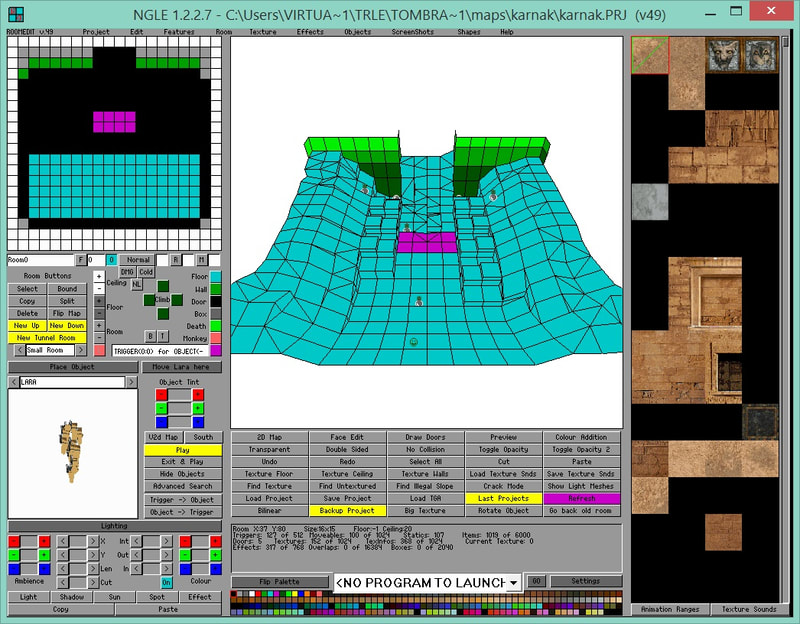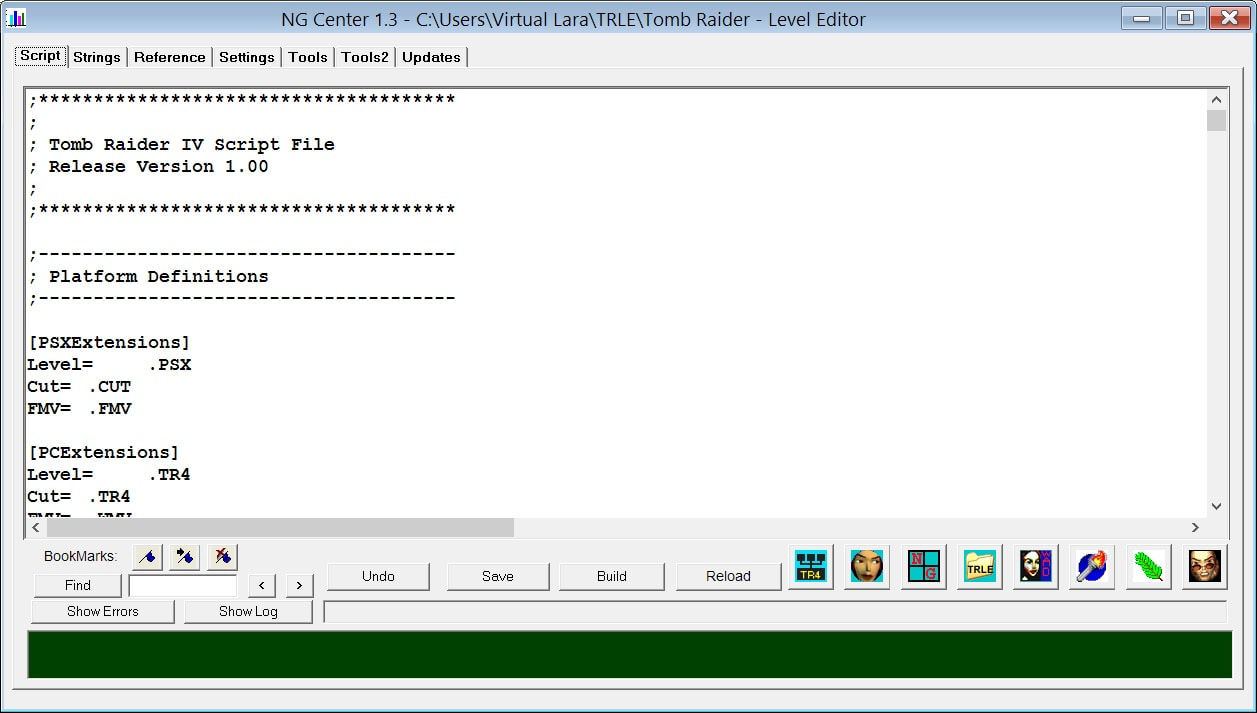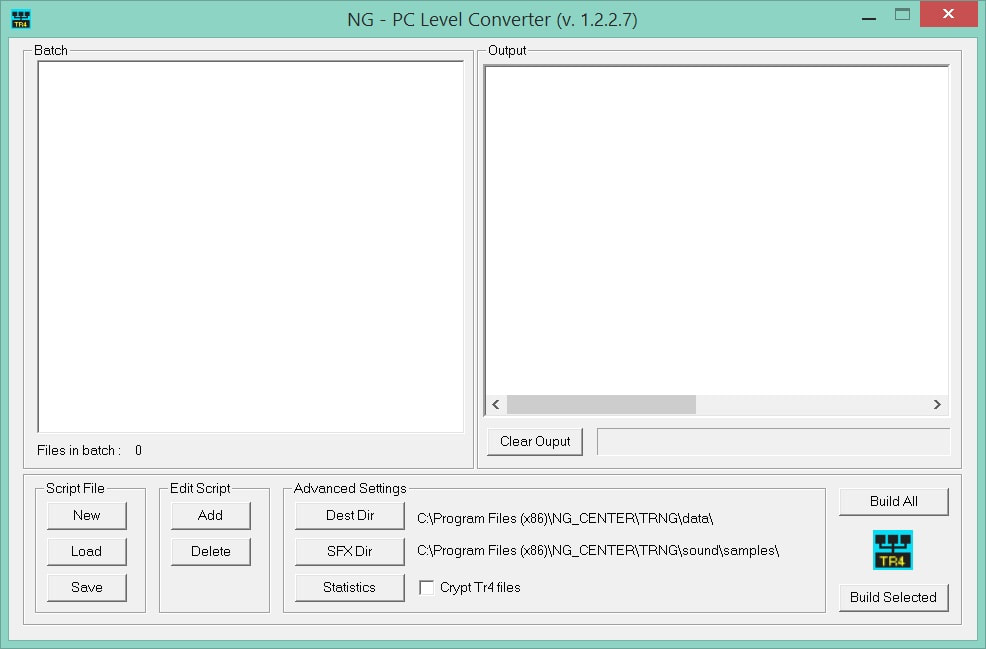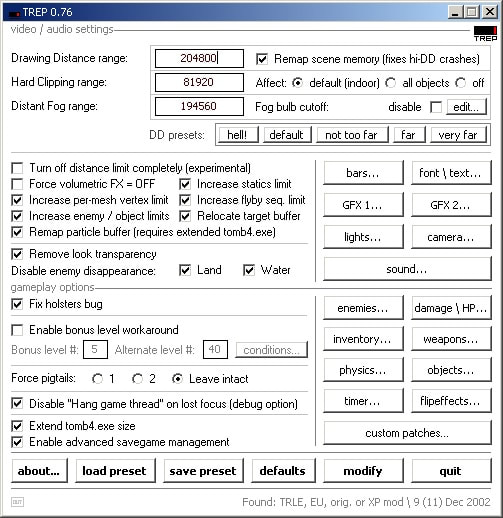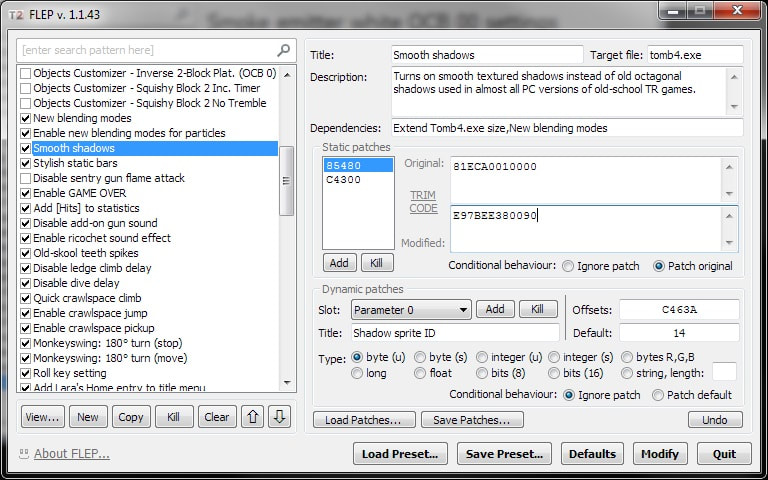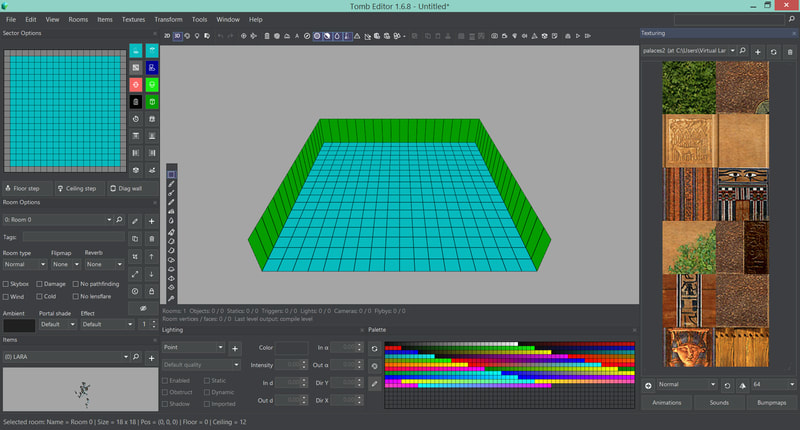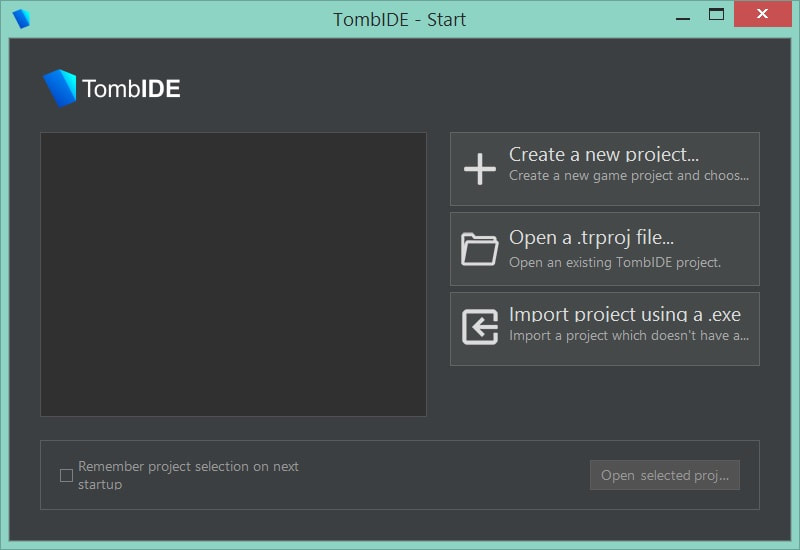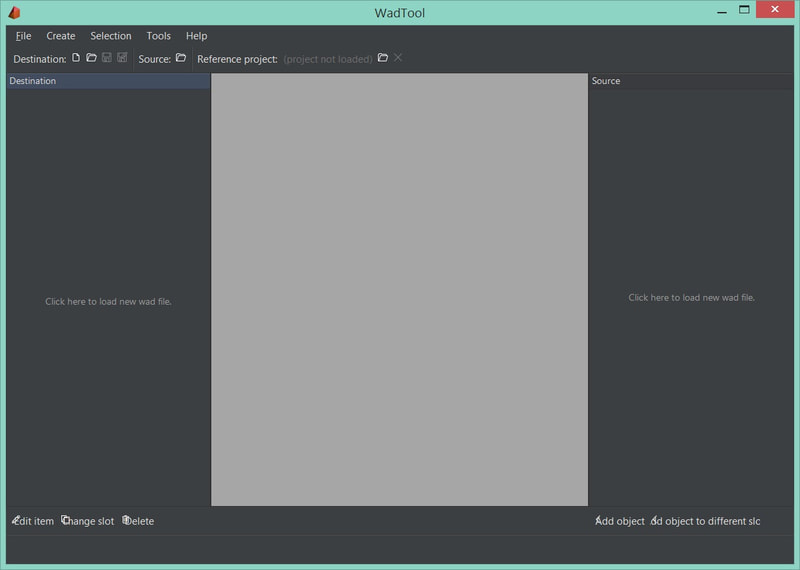The Tomb Raider Level Editor Engines
The very original software released on PC only in November 2000 where it was given out in copies of the then latest game, 'Tomb Raider Chronicles', however this was not the engine that was used to power that particular game; in fact, Eidos Interactive had given out the engine that was used for their previous Tomb Raider, 'Tomb Raider: The Last Revelation' - hence the TR4 WADs and the then lack of TRC content for your levels. What was included was some .WAD files, the Roomedit program, audio files, the game's engine, a convertor tool and a manual written by Rebecca Shearin and Gary LaRochelle from the Eidos US team.
NB: For those unfamiliar with game design or the terms used in this section, we've included a brief TRLE Glossary below. For a more in-depth Glossary, see the Glossary page.
NB2: If you head over to TRLE.net and view all levels in order of first released, you will notice that quite a few levels released even before the official TRLE release date; two names in the list should be familiar to you if you read our TRLE History page. These were made with unofficial editors.
NB: For those unfamiliar with game design or the terms used in this section, we've included a brief TRLE Glossary below. For a more in-depth Glossary, see the Glossary page.
NB2: If you head over to TRLE.net and view all levels in order of first released, you will notice that quite a few levels released even before the official TRLE release date; two names in the list should be familiar to you if you read our TRLE History page. These were made with unofficial editors.
Tomb Raider Level Editor
|
The place to start was with the editing software, Roomedit. This was where builders could raise and lower blocks, add textures to walls and floors, add in light bulbs and shadows and place objects, to name a few. The manual acted also as a guide for the builder to work along with, so that you would be rebuilding the Tutorial level and learning all necessary skills for making a playable and good looking level but it was advised to not rename your project as it required other, unprovided tools; if you download very early levels, you may notice that many will be called tut1 in the game files or Tutorial Level in the game. This was because there were no official tools given out to customise the script files to give custom level names, pick-up names, etc. Once the builder had output their 'project', they'd have to use 'tom2pc.exe', which converted the project and other files into a .TR4, a file that the game's engine then read to make a playable level (providing that there were no errors in the building or converting stages).
And that was, in short, the level editor. In the following months Eidos Interactive released new (old) WADs from TR4 and eventually, from the earlier games , giving players more objects and textures to use in their levels. It is worth remembering that back in these early days, there weren't the tools for creating your own WADs, nor could you rip objects from the previous games or make your own texture packs, so early level aesthetics were limited. What may also be surprising to newer TRLE builders nowadays is that old builders would have to copy the downloaded TRLE files and paste them into their TR4 directory in order to play the custom level, which would conflict with other downloaded TRLEs with the file name of tut1.tr4. Thankfully in 2012, a team over at the TRLE.net forum took it upon themselves to convert all uploaded TRLEs into standalone playable games, which took them quite some years!! |
Dxtre3D
|
Created by Turbopascal using the Delphi language and released in 2003[1], the Dxtre3D (most likely stands for Direct X Tomb Raider Editor 3D) is an unofficial editor and was the follow-up to his editor (and perhaps even the very first TRLE) 'TReditor'. The Dxtre3d allowed users to create maps for the Tomb Raider-Tomb Raider Chronicles engines, and that wasn't the only thing that it could do better than the official release; this editor even allowed for diagonal walls, a feature not truly seen again in an editor until the Tomb Editor. Although not updated anymore, people do still use this editor.
|
Tomb Raider Next Generation (TRNG)
|
Released in around 2008 by Paolone, this package gave a much needed upgrade to both the official editor and engine, opening up new possibilities in scripting, increasing the number of allowed slots in WAD files, increasing the allowed room number and multiple bug fixes. Included among the download files is a modified editor called Next Generation Level Editor (NGLE), a scripting tool called NG_Center and a convertor tool called ng_Tom2Pc.exe. In later updates, Paolone even added in new vehicles, objects, enemies and animations from other Tomb Raider games, items which were not originally coded for use in the TR4 engine. The last major update, v1.3.0.0, was a gift from Paolone to builders as his final update opened up the coding for others to write their own plugins; notably one of the most popular plugins is the Classic Inventory plugin, created by JMN[2]. These tools are still used today.
|
TREP and FLEP
|
Although not new engines like the ones mentioned above, these programs modified tomb4.exe with an improvement of the builder's choice. TREP (Tomb Raider 4.5 Engine Patcher) was released as early as 24th November 2005, originally only changing draw distance and fog distance but later updates added in the ability of fixing the holsters bug, changing the in-game font, changing the colour of health and loading bars, enemy health among many others. TREP would also work on custom levels however it could not modify the TRNG engine.
And that is where FLEP (FLExible Patcher) comes in. It was created by Lwmte and released in 2013, opening up more possibilities and even giving others a chance to make their own patches. Even in 2023, there are fans who still make patches for FLEP. |
Tomb ENgine (TEN)
|
Released on 8th August 2022 and formerly known as TR5Main, TEN is an open source engine programmed by Lwmte and MontyTRC and others to allow the usage of modern LUA scripts to update Lara's movement, enemy abilities, weapon limitation, lighting, map sizes and so much more. Provided in the download for the engine is the Tomb Editor, a more intuitive editing program; TombIDE (TIDE), which is needed to set up your project, choose which engine type you're building for and file locations; WadTool for building up a collection of objects and SoundTool. It is also possible for NGLE users to convert their projects for usage in the Tomb Editor, should they wish to change editor programs.
|
Sources
1 - History of Dxtre3d
http://web.archive.org/web/20060712223229fw_/http://larasmansion.larashome.com/hall_of_fame.htm
2 - Classic Inventory Plugin for TRNG, created by JMN
https://www.tombraiderforums.com/showpost.php?p=8036415&postcount=1
TREP Image and FLEP Image from their external links
http://web.archive.org/web/20060712223229fw_/http://larasmansion.larashome.com/hall_of_fame.htm
2 - Classic Inventory Plugin for TRNG, created by JMN
https://www.tombraiderforums.com/showpost.php?p=8036415&postcount=1
TREP Image and FLEP Image from their external links


